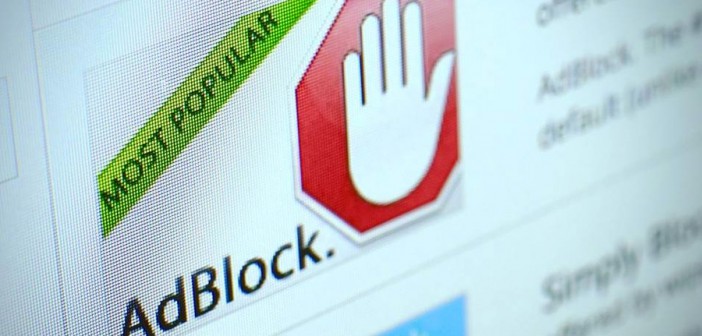Ad-blocking. It’s happening everywhere you look.
It’s the digital equivalent of sticking all the direct mail that comes through your front door straight into the bin, without even a glance.
Like online ads, all that direct mail is a form of targeted marketing but the chances are you really don’t want another pizza/curry/minicab/estate agent.
It’s the same online. 22% of British adults are now doing it, according to the latest IAB research, and that’s 47% if you’re 18-24 years. Chances are you’re one of the digitally aware who’ve had enough of the unwanted pop-ups just as much as those unwanted flyers.
Ad-blocker on, direct advertising gone, job done. If you work in the advertising or media world you might have a momentary twinge of conscience that you’re biting the hand that feeds, but it doesn’t last.
But what does all this disruption in online advertising mean for creative agencies who are invariably tasked with coming up with the creative that makes an impact?
The biggest cry from the Internet Advertising Bureau (IAB) has been for advertisers to adhere to their LEAN standards: ‘Light, Encrypted, Ad choice supported, Non-invasive”. A neat ploy – they’ve shoehorned their ad standards into a current catchword.
But for a creative agency it’s about as useful as passing a law against gravity.
In essence, a creative agency is tasked with finding creative ways of getting brands to people. Most often this is not a blank brief. There are advertising slots in a media plan just waiting to be filled with creative.
And the client is eager for ground-breaking, eye-catching, award-winning creative. It’s why they pay a creative agency after all.
The agency that turns up with an IAB-friendly, text-only, light, low-impact creative concept will probably have a low-impact meeting with their client. There are not many ways forward for the low-impact agency, despite any protestations they put forward about the principles of an industry body.
As it stands there are a few options for agencies:
Carry on regardless
Carry on with big impact advertising that you know your brand client will sign off. Exciting and eye-catching is what you do. It’s worked so far, it’ll work again.
You know that 25% of your audience are already on the other side of an ad blocker, so let’s just blast the ones who are left. It might send a few more into the arms of the blockers, but that’s not in the brief.
Leave it to social
Abandon all advertising – advocate for the absolute power of content on social media and social sharing. It’s clearly the future…
But is it the only future? Facebook, Twitter, Snapchat all exist off advertising so this argument is counter intuitive. And not everyone lives in the social media bubble. Although digital media spend is predicted to eclipse that of TV in 2017, the enduring power and influence of TV shows how things don’t always change in quite the way predicted.
Explain gravity
An agency could point out the IAB’s laws against gravity to their client. They might even get them to feel the same momentary twinge of conscience before the client points out that pre-roll, auto-play, push-down are all part of the standard online advertising arsenal (sorry,inventory) available to any and all.
This will probably be at the point where you see another agency pass you in the client’s revolving door. No doubt about which direction you’ll be going.
See what people want
The honest choice would be creative agencies to recognise and remember what makes a real person look at a brand. Understand that real people turn off annoying ads but also still respond to ideas that are clever, beautiful or interesting.
Online advertising placement has long been about capturing attention, and the formats have followed suit and there is no one-size-fits-all creative solution that will work to reverse this trend instantly, but there are enough creative brains in the industry to find a few options.
Clever ideas for discerning people – it’s why they pay creative agencies after all. There is still the lost 22% (and growing) that you can’t touch with online ads, but that’s also part of the challenge for the creative agency.
Find a way to get to them, that doesn’t get at them.
Realistically creative agencies are not going to be the ones who will be able to solve the adblock crisis. They are too far removed from the decisions that are made by ad tech providers who are churning out new formats for better interaction rates.
The ad tech industry wants more toys to dangle in front of users (and they do tend to think of them as ‘users’, not ‘people’). Their drive is for more, when it’s quite clear that people want less.
Agencies need to do more than make better creative executions and will need to take a stand for improving the user’s experience.
They are the ones who take the user perspective to the brand. It will take a fair bit of courage by both brand and agency to try something different in the face of the established online advertising system.
It’s an outside chance but there is definitely an opportunity for a brave brand in the middle of this disruption. Whichever path agencies take, ultimately this battle is going to be decided on the publisher’s turf.
They’re the ones who are feeling the pain of adblockers and they’re the ones who’re doing their best to beat gravity by learning to fly.
Perhaps it’s time for the publishers to get a creative agency or two on board to help them grow wings, or perhaps just build a hoverboard.

